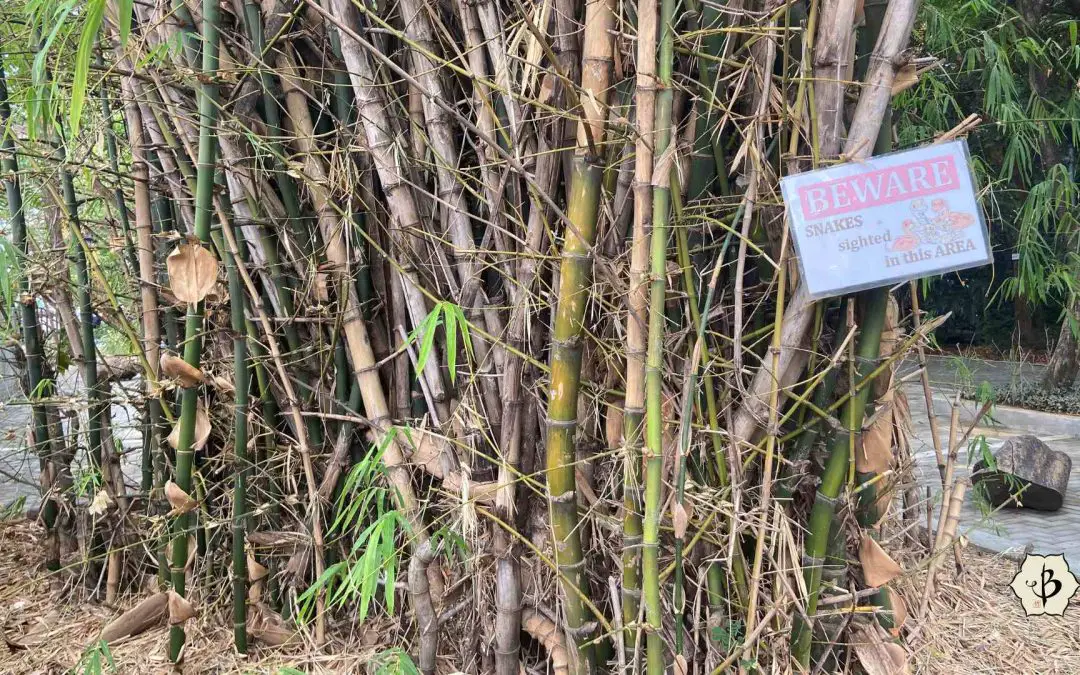When you tell your neighbors that you’re thinking about planting some bamboo, you’re liable to get a range of reactions. Maybe they’ll share your enthusiasm for the legendary grass and tell you how much they love their bamboo linens. Or perhaps their face will turn as white as a sheet as they ask if you’re out of your mind. Indeed, bamboo is an amazing plant, as your first neighbor realizes. But it’s also earned a bad reputation, which your second neighbor has heard about. And a few dangerous varieties of bamboo have caused some cautious gardeners to turn their backs on the entire family of perennial grasses.
Among the 1,400+ varieties of bamboo, dozens of them could make a fine addition to your garden. But there are a handful of dangerous bamboos to watch out for. The most troublesome kinds of bamboo tend to be those with running rhizome roots, some of which can spread very aggressively. The most vigorous runners belong to the genus Phyllostachys, which includes dozens of popular species. Pleioblastus is another genus to be aware of, small in stature but with a rapacious growth habit. Finally, there are a few kinds of bamboo with sharp thorns that can inflict bodily pain.
In the following article — first published in August 2020 and most recently updated in June 2024 — we’ll look at some of the most dangerously invasive varieties of bamboo. We’ll help you to identify and recognize them. We’ll also give you some pointers on how to tame those wild species. Better informed about the nature of bamboo, you can make a more educated decision as to whether or not you want to plant one of these vigorous running bamboos, which are actually quite popular, or a more manageable clumping bamboo. Then we’ll look at some bamboo that is dangerous for other reasons.

To begin with, here’s a handy chart that lists some of the most dangerous types of bamboo.
| Botanical name | Common name | Description |
| Bambusa blumeana | Thorny bamboo | Clumping bamboo for Southeast Asia with thorny lower branches |
| Guadua angustifolia | Colombian giant thorny | Giant bamboo of Central America with sharp thorns |
| Phyllostachys aurea | Golden bamboo | Notoriously aggressive, with canes 30′ tall and less than 1″ thick |
| Phyllostachys aureosulcata | Yellow groove bamboo | Large timber bamboo (50′ tall, 2-3″ thick) with yellow stripe |
| Phyllostachys bissetii | Bissetii | Very cold hardy, 10-30′ tall, with thick foliage |
| Phyllostachys nigra | Black bamboo | Beautiful black culms, 10-20′ tall and 1″ thick. |
| Phyllostachys rubromarginata | Red margin bamboo | Ideal for privacy screens, up to 40′ tall and 3″ in diameter |
| Pleioblastus ssp. | Small bamboos with vigorous roots |
Running or clumping bamboo
How they grow
The first thing to understand is that you can basically divide bamboo into two different categories: running bamboo and clumping bamboo. As you might guess from the name, running bamboo can spread quickly and cover great areas, basically running amok. These are the varieties you need to be careful with. But not all varieties of running bamboo are created equal. Some species are especially aggressive and invasive, and those are the ones we want to warn you about.
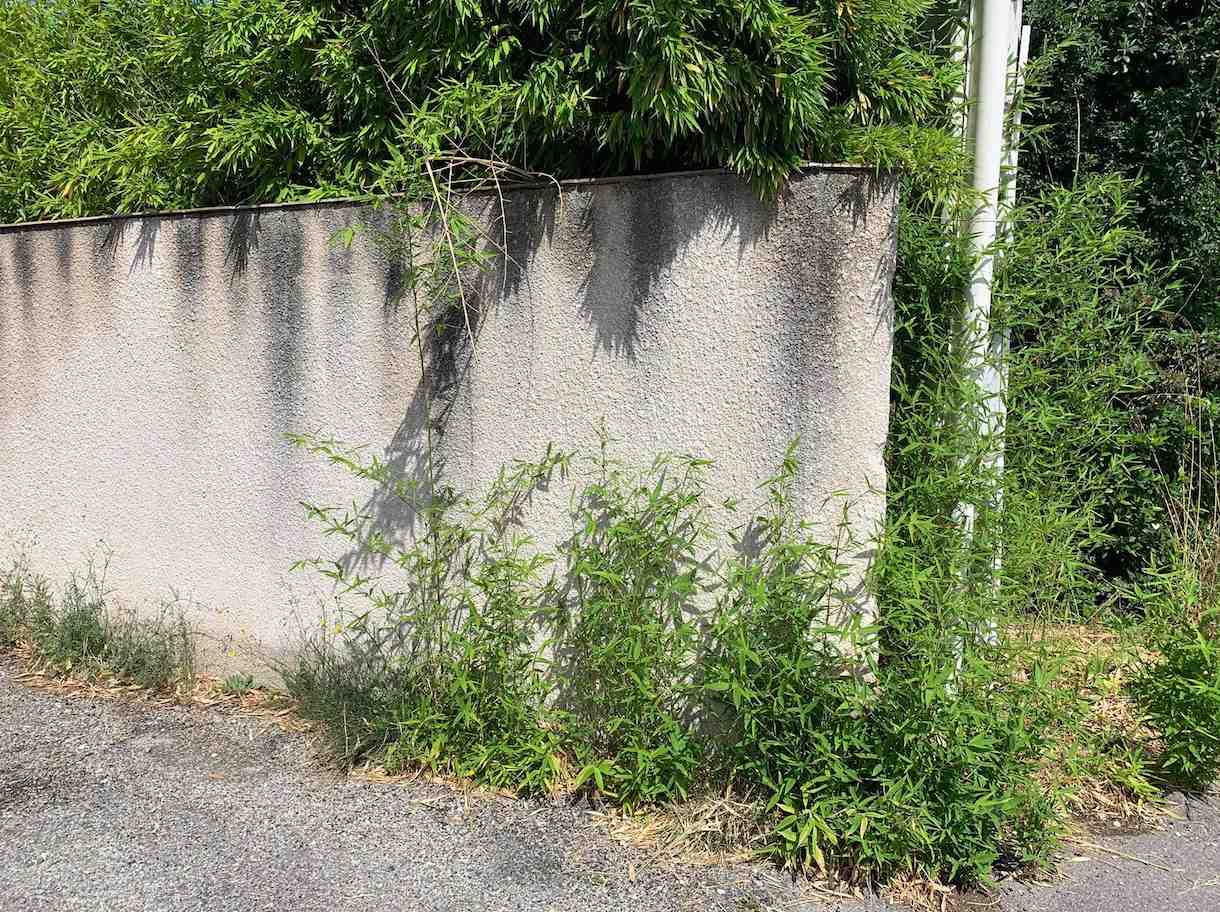
This is such a concern that some states and cities and gone so far as to pass laws that regulate or prohibit certain kinds of bamboo.
Clumping bamboos, by contrast, tend to stay put. They have a different type of root system that remains tight and compact. Generally, each species of clumping bamboo has its maximum footprint. In other words, once the grove reaches full size, which could be anywhere from a few feet to several yards in diameter, it will stop spreading. There are hundreds of kinds of clumping bamboo, including some very popular and attractive varieties like Oldhamii and Buddha’s Belly, of the genus Bambusa.
Even some kinds of clumping bamboo can get out of control if they are left to their own devices. While most clumps will reach their maximum size and then stop spreading, there are also open-clump species that will continue to spread over time, albeit slowly.
Where they grow
Generally speaking, running bamboos and clumping bamboos prefer different types of climates. This is not a hard and fast rule, but it is an important distinction to be aware of. Most of the clumping bamboos are native to tropical and subtropical climates like Southeast Asia and Indonesia. This makes many of those varieties difficult to grow in most parts of Europe and North America. But again, there are a number of exceptions.
If you live in a cooler, more moderate climate, you’ll probably have better luck growing running bamboo, which is typically native to temperate climates like central and southern China. These varieties are going to be a lot hardier in the winter, able to tolerate freezing temperatures for longer periods of time. This makes running bamboo more popular in many parts of the U.S.
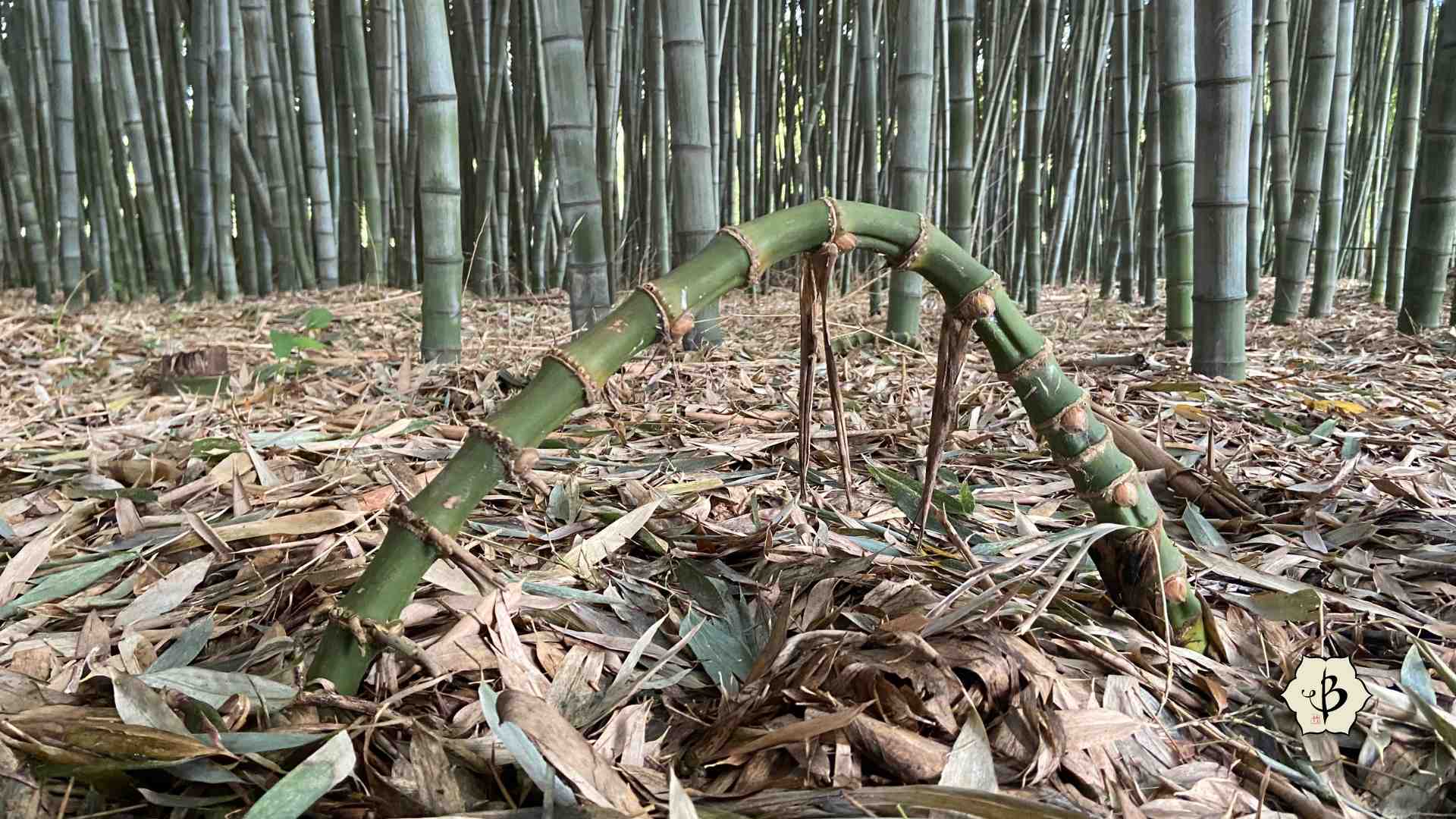
How running bamboo becomes a problem
The problem is, once a running bamboo gets going, it can be almost impossible to stop. Usually, someone will start out with a couple pots and gloat over how well they are growing. But when the spreading doesn’t stop, the bamboo easily becomes a nuisance.
There’s an old saying about bamboo: The first year it sleeps, the second year it creeps, and the third year it leaps. The point is that you might not notice anything out of the ordinary in the first year or two of growing bamboo. But underground, the vigorous rhizome root system is gaining a foothold. And once the foundation is in place, that’s when you really see the new shoots coming up around the yard.
If not well contained, the bamboo shoots could show up in your flower beds, your vegetable patch, or your well-manicured lawn. Not only that, but they have no respect for property lines. Bamboo frequently crawls under fences and wreaks havoc on other people’s gardens. This is not a good way to keep on good terms with your neighbors.
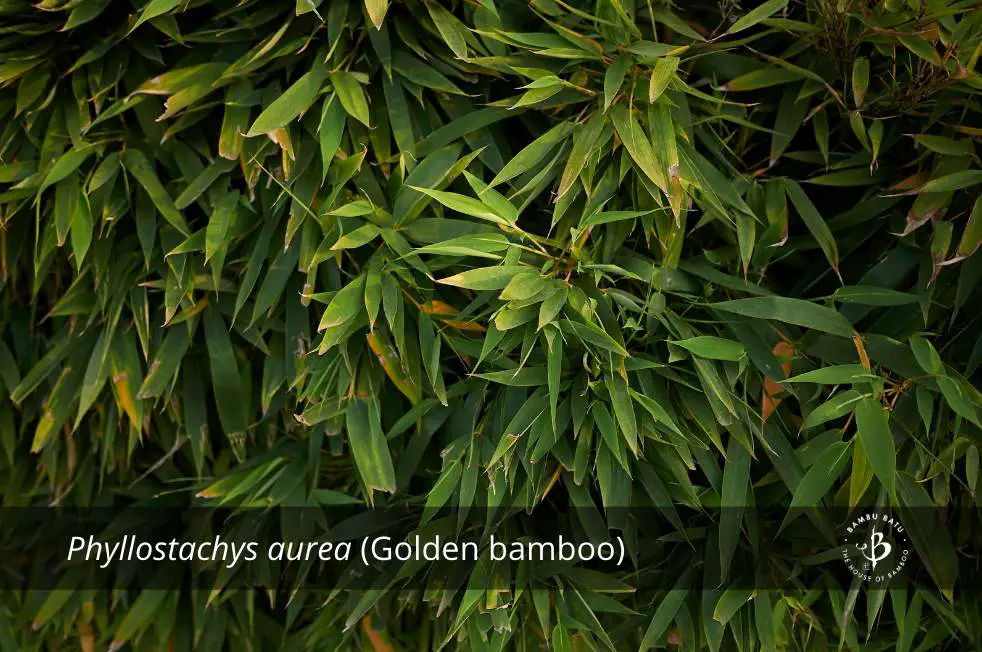
Dangerously vigorous bamboo runners
There are hundreds of varieties of running bamboo out there, but many of the most aggressive species belong to the genus Phyllostachys. Bamboos of this genus also tend to be very cold-hardy, so it’s pretty tempting to plant them in cold climates.
- Phyllostachys aurea (Golden bamboo or Fishpole bamboo): An attractive, fast-growing species that gets up to 30 feet tall with thick culms and dense green foliage, Golden Bamboo has become a very popular variety. It’s especially popular for privacy screens on account of its height and density. It’s actually a great choice in cold climates where it’s less likely to spread out of control. But beware, with ample water and mild winters, it can spread like crazy. (Not to be confused with Bambusa vulgaris, a clumping variety of timber bamboo that is sometimes called Golden Bamboo.)
- Phyllostachys aureosulcata (Yellow groove bamboo): Widely grown as an ornamental, this species has a distinctive yellow stripe that runs along the culm grooves. Shoots can grow up to 50 feet tall and 2-3 inches in diameter. The fresh shoots are also known to be quite tasty. Some New England states have banned this species, which is cold-hardy and spreads vigorously.
- Phyllostachys bissetii: Very cold hardy with a vigorous growth habit, Bissetii is a popular choice for privacy screens. In the coldest parts of the country, it usually gets about 10 feet tall. In more moderate areas, like USDA zone 7, it can exceed 30 feet in height with a dangerously aggressive root system.
- Phyllostachys nigra: Also known as Black bamboo, this is a highly sought-after species, for its beautiful black culms. It also grows pretty easily, and sometimes a little too easily. It’s fairly cold hardy, like all the Phyllostachys, with a modest height of around 10-20 feet.
- Phyllostachys rubromarginata: Another popular choice for privacy screens, because it fills in so quickly. It’s not quite a timber bamboo, but it’s larger than most, with culms up to 30-40′ tall and 3″ thick. A reddish hue on the new shoots has earned it the nickname Red margin bamboo.
- Pleioblastus: Another genus that is popular for its more compact species, suitable for pots and containers as well as ground covers. P. fortunie and P. viridistriatus are especially interesting and attractive. Just don’t be deceived by their low stature; their roots can really spread out of control.
Recognize and identify running bamboo
A tricky thing about bamboo is that it comes in over a thousand varieties, many of which look extremely similar, almost indistinguishable to the untrained eye. In fact, it’s not uncommon for nurseries to mislabel their bamboo. (That’s why we always recommend finding a nursery that specializes in bamboo.) There can be a lot of confusion with the common names, such as Golden Bamboo, which could actually refer to a few different species. Then there are names like Timber Bamboo, which don’t tell you anything about the species, only that it gets real big.
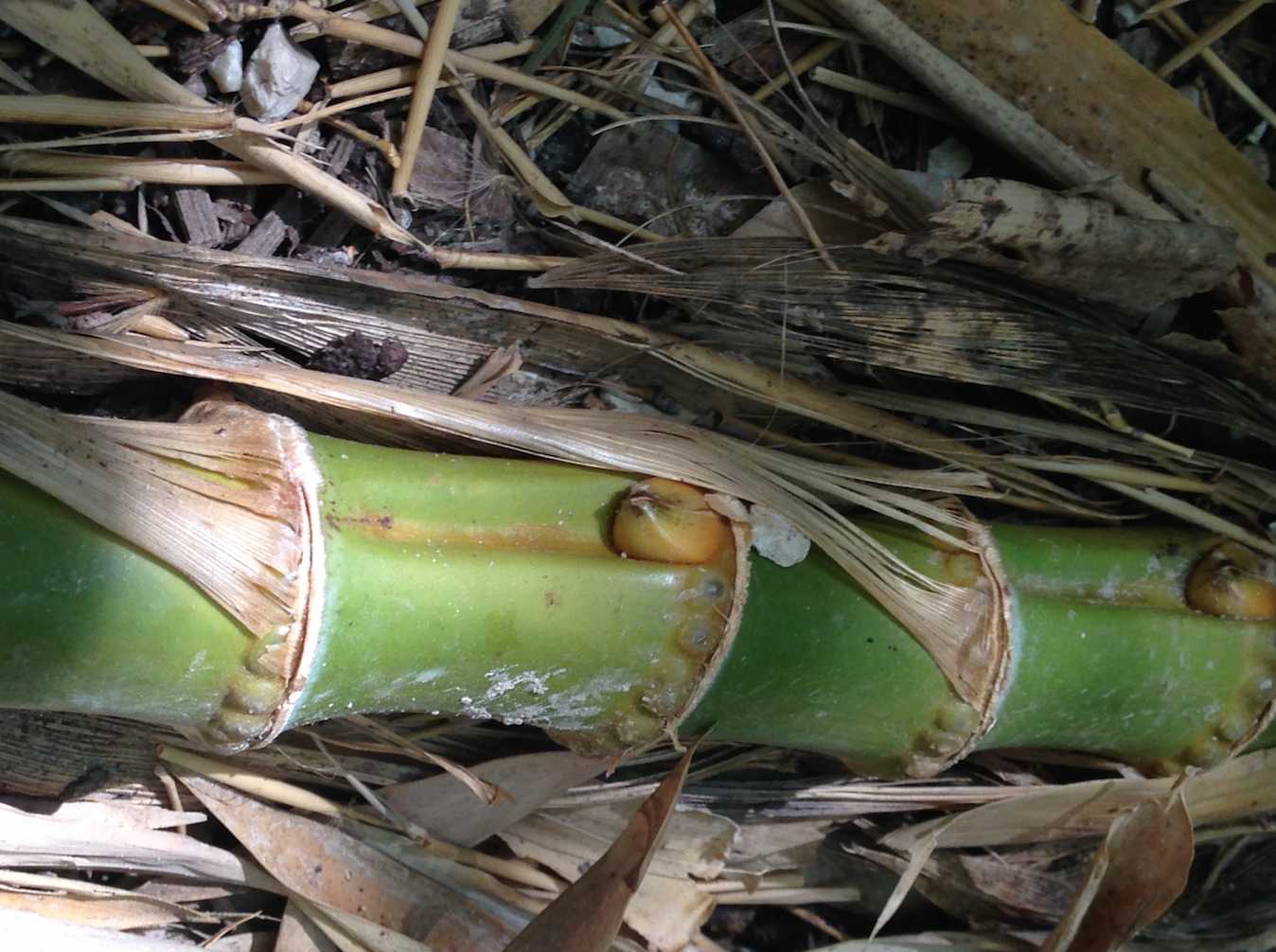
But there is a way to identify Phyllostachys, which is the largest genus of running bamboo, including dozens of species. If you look closely at the stems (culms) of a Phyllostachys bamboo, you’ll see a groove that runs lengthwise between the nodes. The groves alternate sides, from one internode to the next. It’s a distinctive characteristic, and you’ve probably noticed it before, because Phyllostachys are so common and prolific.
If you see this groove, you can be sure that you’re dealing with a running bamboo. And for a novice, that’s a pretty good start. It won’t tell you if it’s a super-aggressive runner, but you’ll know that it’s a runner. Unfortunately, if you don’t see the groove, you can’t be certain that it’s a clumping bamboo. You’re only pretty sure it’s not a Phyllostachys. Yeah, nobody said this would be easy.
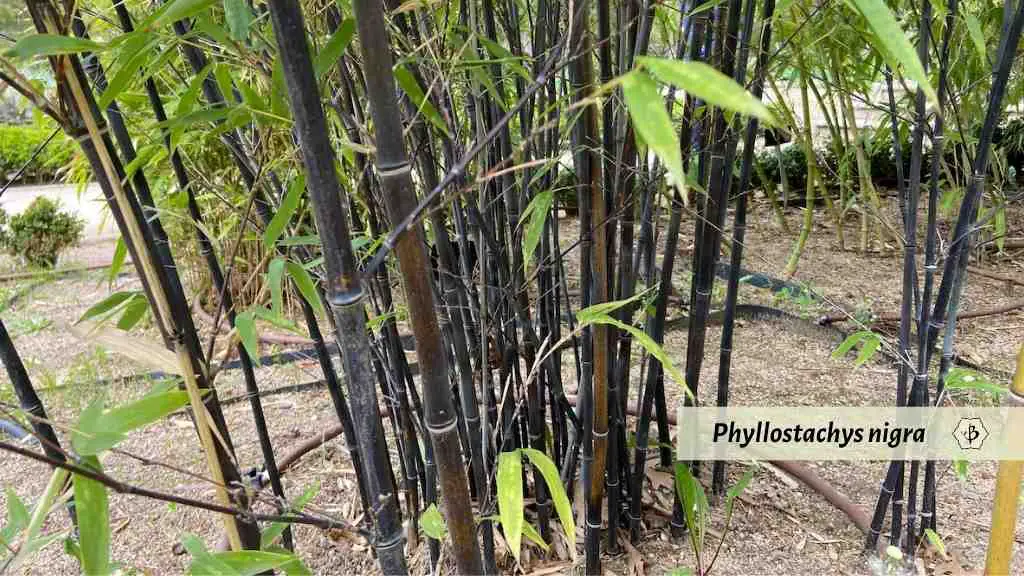
Alternatives to running bamboo
If you’re afraid to face the dangers of a fast-growing, aggressively spreading bamboo, try planting a clumping variety instead. We’ve already put together a super handy guide to clumping bamboo, which will give you a really good idea of what species might work best for you.
One of the most popular genera of clumping bamboo is Bambusa. This group of bamboo includes Oldhamii and B. vulgaris (common bamboo), as well as dozens of other species. Some Bambusa species really need a tropic or subtropic environment. Others, including Oldhamii, grow just fine in a mild climate on the West Coast. But none of them will survive in a deep freeze in New England or the Midwest.
For those freezing winters, you’ll have the best success with a variety of Fargesia. This is the most cold-hardy genus of clumping bamboo, with many wonderful species to choose from. Most Fargesias can survive temperatures in the negative Fahrenheit territory without difficulty. They may drop their leaves in the dead of winter, but they will surely bounce back in spring.

Curb the danger: Containing your running bamboo
In some cases, you may be determined to plant a running bamboo. Maybe you love the look of Black bamboo (Phyllostachys nigra), and you want to harvest the beautiful poles for a variety of arts and crafts projects. Or maybe you’re just looking for some bamboo that will grow fast and fill in a nice privacy hedge within a year or two.
These are situations that call for running bamboo. But don’t worry, with a little precaution you can keep those runners from running out of control. Check out our in-depth articles on Bamboo containment and Potted bamboo.
Planting bamboo in a pot can be a challenge. Especially if you have a fast-growing bamboo, it’s likely to get root-bound pretty quickly. And if it gets roots bound, it won’t be happy. It might also break your pot. But the first problem you’ll have is that the water doesn’t soak into the dirt. In a seriously root-bound bamboo, the roots are packed so tight that the water can’t even get in, and so the plant will start to dry out.
The solution to this is not complicated. Remove the bamboo from the pot and divide the root ball. Depending on the size of your pot, you may end up breaking the root mass into 2 or 3 or even several pieces. Be sure to have some extra potting soil on hand, and keep the roots wet as you go. You might lose a couple culms in the process, but most of the roots should survive. Give them a few months to re-establish in their new pots, and then you’ll have a few extra bamboo specimens to spread around your garden or to give away as gifts.
Containing your bamboo with a rhizome barrier might be a more effective strategy. This provides the bamboo with a more natural setting. Growing directly in the earth, the roots will have space to spread out, and the water can drain organically into the depths of the earth. Even if the roots press up against the barrier on the sides, they won’t get twisted up at the bottom like they do in a pot.
You can find effective rhizome root barriers at bamboo specialist nurseries, or more conveniently online.

Dangerously thorny bamboo
Thorns are another risk to pay attention to when you’re planting or harvesting bamboo. This is a far less common concern, but at that same time, the thorns can be dangerous because they often come unexpectedly. Luckily, there are only a few types of bamboo with thorns, and they are generally limited to the tropics of Central America or Southeast Asia.
Bambusa bambos: Also known as giant thorny bamboo or Indian thorny bamboo, this can be a dangerous species of bamboo, especially to those who like to wrap their hands around a culm and squeeze it! The giant canes can grow up to 5 or 6 inches in diameter, towering as much as 100 feet tall. Thorny lateral branches can be a nuisance, but being native to India and southern Asia, they are very hard to come by in North America.
Bambusa blumeana: Commonly known as spiny bamboo or thorny bamboo, this Indonesian species has sharp spikes coming out at the nodes of the spindly lower branches. Formidable canes get 50 to 80 feet tall and 4 to 6 inches in diameter. This variety is unusual in that it can tolerate flooding and will survive in marginal areas along waterways. (Most bamboos cannot tolerate saturated soil.) You can find B. blumeana in Florida nurseries, but it’s generally bushier and doesn’t grow nearly as tall or thick as it does in its native Southeast Asia.
Guadua angustifolia: A neotropical species, native to Colombia and Central America, this timber bamboo is one of the most important species for building and construction. As an open clumper, it can spread more than most Bambusa species, but nothing like a Phyllostachys. These giants can grow about 60-80 feet tall, and 4 to 5 inches in culm diameter. Lower branches have sharp thorns. In the equatorial highlands, these form stunning forests with rich green color and impressive stature, but they’re not the best choice for an ornamental garden.

Further reading
If you found this article about dangerous and invasive bamboo helpful, please consider subscribing to our blog. You might also enjoy some of these articles.
- Tips for bamboo containment and removal
- Is bamboo poisonous?
- Timber bamboos
- 11 Varieties of Cold Hardy Bamboo
- Proverbs about bamboo
- Pros and Cons of Potted Bamboo
- Great bamboo nurseries of America
FEATURED PHOTO: Thorny bamboo (Bambusa blumeana) can be a dangerous force to reckon with, especially when snakes start nesting between the culms. Photo by Fred Hornaday in Manila, Philippines.

